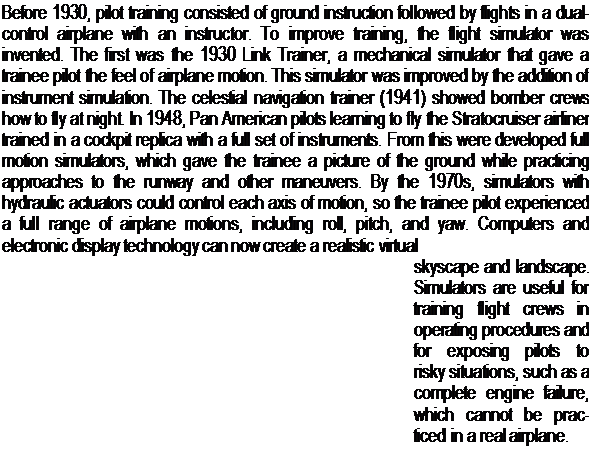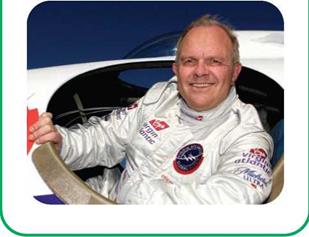Airline Pilots
Every airplane is slightly different to fly, so pilots have to qualify in every kind of plane they have not flown previously. Initial training for pilots joining an
airline takes about ten weeks, during which they learn the specific procedures of the airline and get used to the aircraft. Training is often done in pairs and includes simulator training and practice in all maneuvers. After pilots pass this training course, they receive their initial operating experience in the air alongside an instructor pilot. They take a final flight test or “line check” and are then cleared to fly scheduled passenger flights.


 |
Statistically, flying is very safe. According to the FAA, a well-built, well-maintained aircraft flown by a competent and prudent pilot is as safe as any other form of transportation.
STEVE FOSSETT’S RECORD FLIGHTS
American pilot Steve Fossett set remarkable records piloting balloons and specialized airplanes. In 1995, he made the first solo flight across the Pacific Ocean in a balloon. In 2002, he made the first solo, nonstop, round-the-world balloon flight (in 14 days and 19 hours). In 2005, Fossett piloted the Virgin Atlantic Globalflyer on the first nonstop, solo, round-the – world airplane flight, a trip that took 67 hours and covered 22,878 miles (36,811 kilometers). In February 2006 Fossett then set a record for the world’s longest flight, when he flew Globalflyer for 26,389 miles (42,460 kilometers) in a journey lasting nearly 77 hours. In September 2007, Fossett disappeared in a small airplane while in a scouting flight over the Nevada desert. He was officially pronounced dead in February 2008.
|
|
A modern aircraft is a highly complex, computerized machine. To fly it properly, a pilot needs technical as well as piloting skills. A first officer and other cabin crew assist the captain of an airliner. Most large commercial airplanes have two pilots. (General aviation airplanes and helicopters are usually flown by a single pilot.)











